The Arbitrum ecosystem is growing strongly and has proven its appeal through the inflow of money as well as leading a number of novel models in the DeFi market (Real Yield, Delta-Neutral Yield). Holdstation has analyzed several prominent projects such as GMX, JonesDAO, PlutusDAO, Dopex,... and the next potential protocol studied in this article is Umami Finance.
Umami Finance Staking Guide - A Low-Risk Platform For Passive Income On Arbitrum HERE
Genesis
Going back to the heyday of the crypto market in 2021, the appearance of OlympusDAO ($OHM) is considered a DeFi 2.0 revolution with novel mechanisms such as bonding, rebasing and Protocol Owned Liquidity (POL). After that, many fork projects from OlympusDAO sprang up like mushrooms.
Many of these projects have been really successful during a period of time when token prices skyrocketed with multi-million dollar treasury and thousands of percent APR. Also ZeroTwOhm (Z20), the predecessor of Umami Finance, became famous with APR up to 1,000,000%+. However, entering 2022, when new money flow did not pour in nor was withdrawn, the $OHM fork season quickly collapsed.
Despite that, Umami remained in the market and improved the project itself towards a new vision. Through community voting on Snapshot, Umami eliminated the rebase model and developed a treasury that creates a yield protocol.
What is Umami Finance?
Umami Finance is a DeFi platform on building strategic vaults that provides a source of passive income derived from the profits of the DeFi Arbitrum ecosystem. Investors can simply stake assets $UMAMI token and receive sharing rewards through Umami Finance revenue in the form of $WETH or $USDC - Real Yield model is gradually being widely applied towards the DeFi 2.0 sustainable development.
So how is Umami Finance's revenue and operating mechanism?
Products and investment opportunities
Umami Finance uses its current reserve of nearly $5 million (excluding the amount of $UMAMI tokens permanently locked) to participate in profitable activities in the DeFi market such as Farming, Staking, providing liquidity for those other platforms.
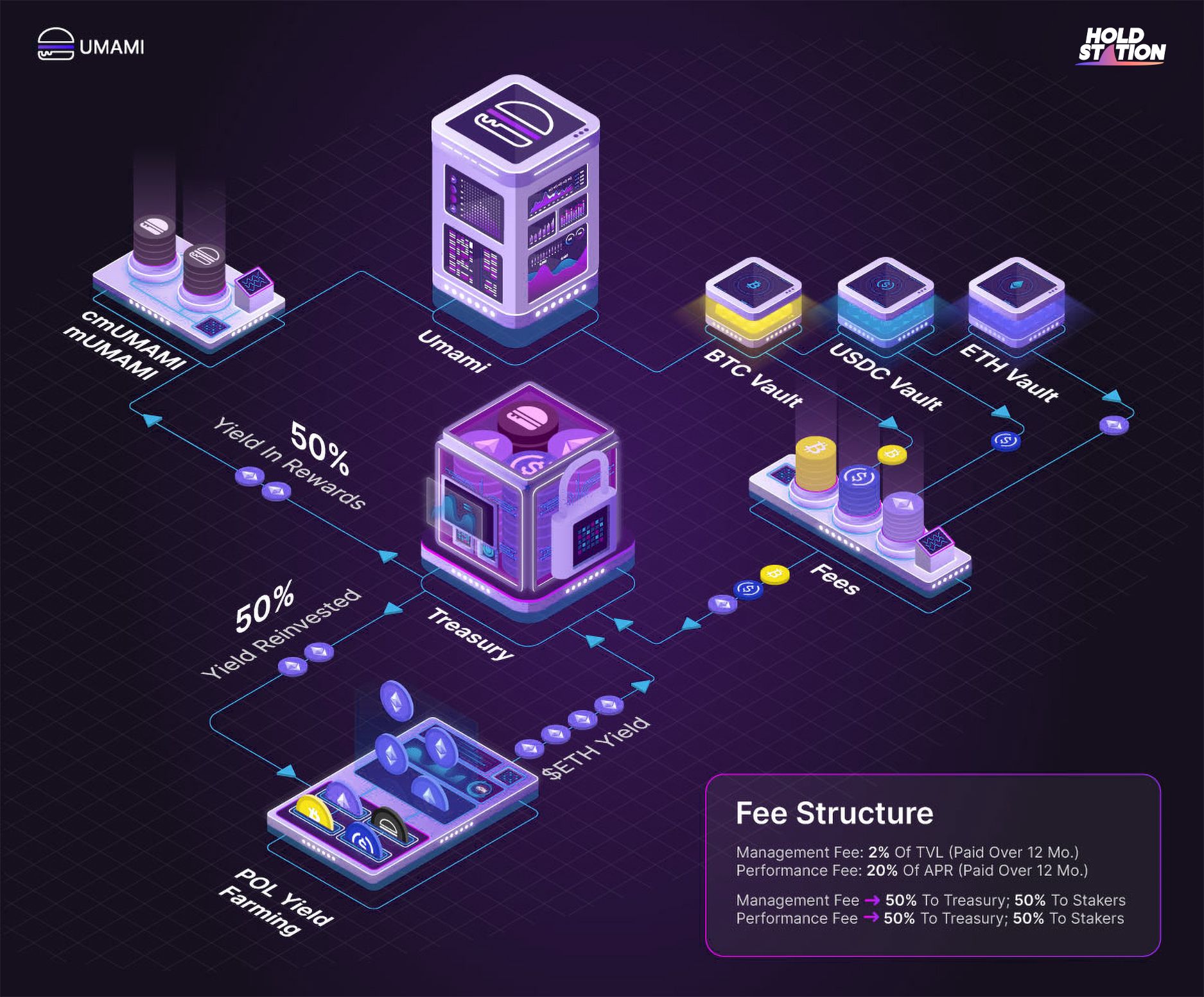
With the benefits obtained:
- 50% allocated to $Umami stakers in the form of $WETH from revenue/fees from the platform -> real performance rewards - Real Yield.
- 50% for the treasury fund to continue performing DeFi activities -> increase the project's treasury -> in the long run, the reward for users will be higher.
Umami is implementing 2 main products: Marinate v2 and Auto Compounder. In addition, Umami Finance will soon release Delta Neutral USDC Vault V2 and an expected APR up to 20% - this is expected to be a potential product following a new model in the DeFi market.
Marinate v2
You can stake $UMAMI and get $mUMAMI representing the amount of $UMAMI Stake.
When holding $mUMAMI, you will be able to claim $wETH rewards every few days.
You can stake $UMAMI in exchange for $mUMAMI at any time, but can only unstake $UMAMI on the 1st and 2nd of each month.
The current APR is around 3.2% - not too high but in a bleak market condition and the low-risk Umami mechanism. It's still fine.
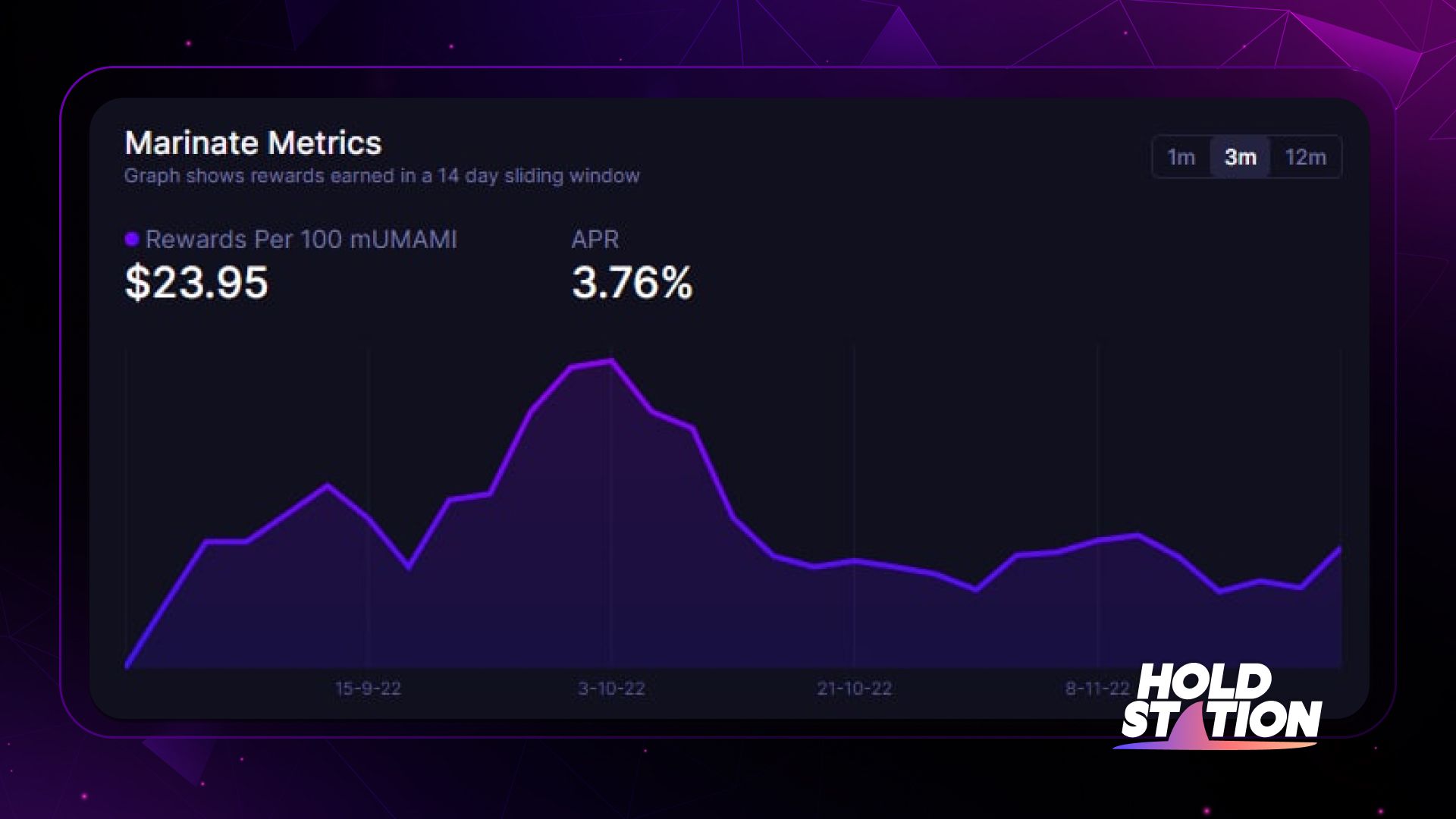
If investors do not want to have to wait until the right time to unstake, investors can sell $mUMAMI to $UMAMI at a rate that can vary in the secondary market (Uniswap) created by UMAMI Finance.
In addition, if you want to become a liquidity provider cmUMAMI:UMAMI you can do it on Uniswap pool. In case you expect the fee generated from the unstaking pool through the Uniswap pool to be higher than the staking reward, then LP will be a good choice. Not only that, this way you can accumulate $cmUMAMI at a cheap price.
Auto Compounder
$cmUMAMI is another mechanism that automatically swaps $WETH rewards to $UMAMI, increasing $UMAMI position in vault staking.
- Stake $UMAMI receive $mUMAMI, then deposit $mUMAMI into the autocompounder locked for 1 month.
- Once WETH is allocated, the autocompounder will automatically swap the $WETH reward to $UMAMI - using the UMAMI/WETH Uniswap v3 pool pair.
- Autocompounder takes this $UMAMI stake in exchange for $mUMAMI, thereby increasing the $mUMAMI position for investors.
- This process is repeated every time $WETH allocates.
You can unstake $cmUMAMI to $mUMAMI whenever you want with no fees (If $cmUMAMI becomes worth more than $mUMAMI then the swap rate now may not be 1:1 like mUMAMI:UMAMI) .
Thus, depending on your taste and investment risk, you have one of the following investment opportunities:
- If you like the $ETH reward, you just need to stake to receive $mUMAMI.
- If you want to increase your position of $UMAMI stake, Auto Compounder will be the right choice.
- If you believe that Uniswap pool generates profits above staking costs and rewards and accumulates cheap $cmUMAMI, you should choose Uniswap v3 LP.
Umami Finance Staking Guide - A Low-Risk Platform For Passive Income On Arbitrum HERE
Next, let's find out with Holdstation the most anticipated product to be launched - Delta Neutral $USDC Vault (this may be the driving force for the price increase for the UMAMI token).
Before that, you should read the following analysis to understand the Delta Neutral model: What is Delta-Neutral Yield? New Forces On Arbitrum
Delta Neutral USDC Vault
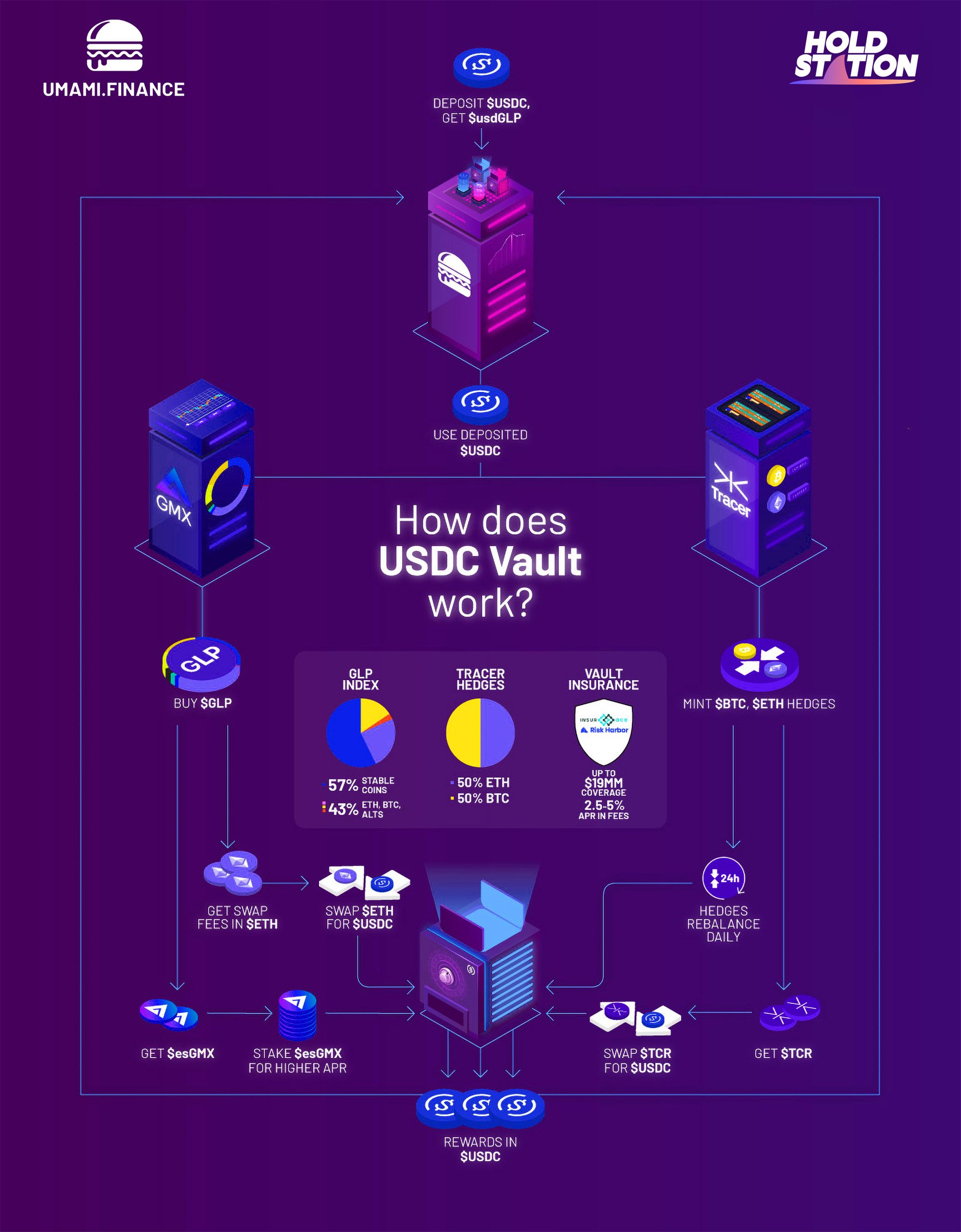
$USDC Vautl Delta Neutral strategy will combine between GMX and Mycelium.
- GMX
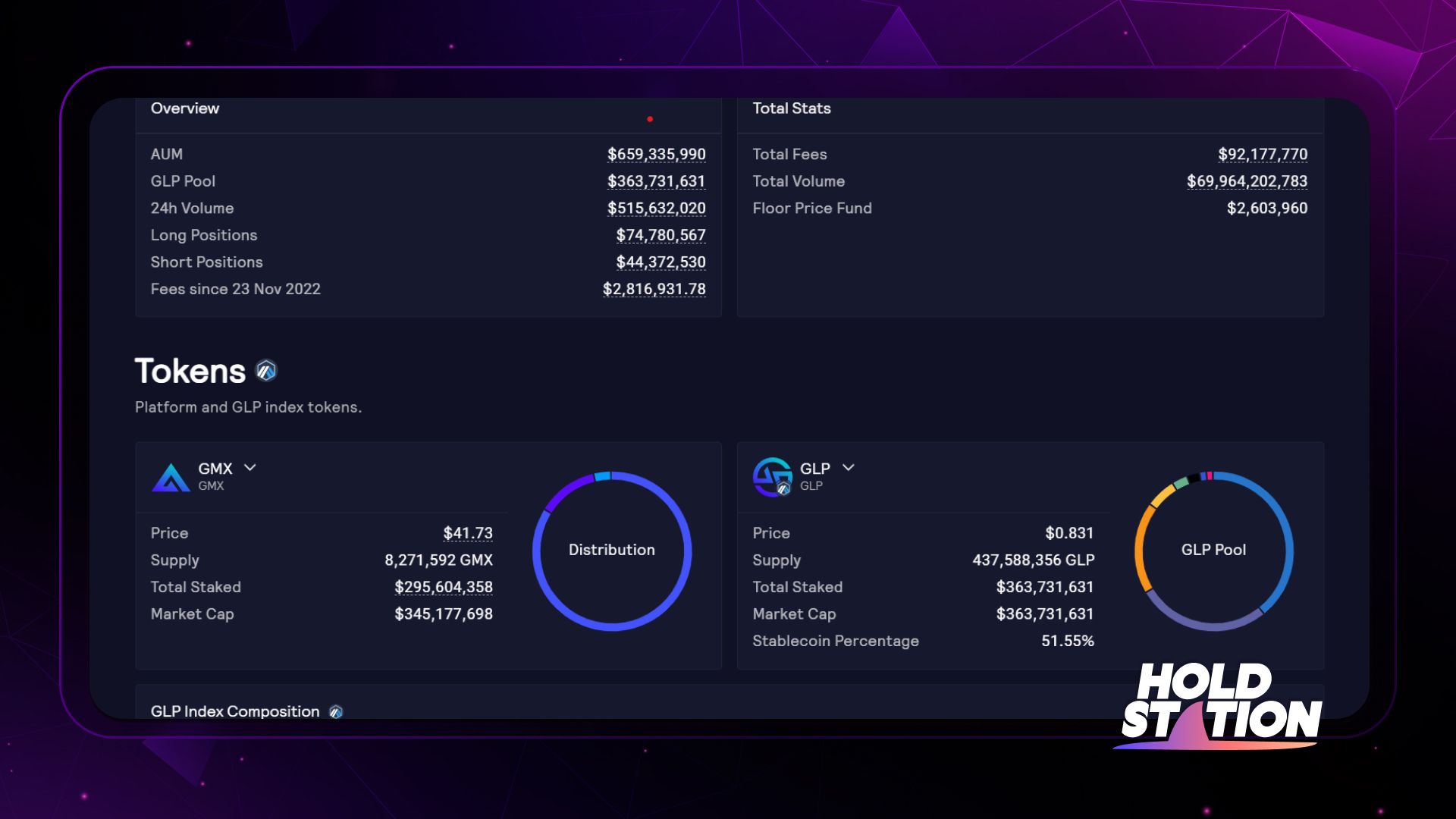
Decentralized leveraged exchange using liquidity pools from partners. The liquidity provider will receive a representative token $GLP and enjoy 70% of the platform generated fees (paid in the form of $esGMX and $ETH or $AVAX). Holder $GLP has an APR of about 30%.
$GLP will face 2 main risks: the value of the collateral for $GLP (if the ETH price drops, GLP will also be affected) and needing traders to trade on the exchange at a loss to enjoy higher fees.
- Mycelium
Mycelium provides a decentralized derivatives infrastructure with its main product Perpetual Pools - allowing leveraged staking without liquidation. User sending USDC receives L-tokens if executing LONG or S-tokens if SHORT command. When owning tokens, they can stake to enjoy rewards.
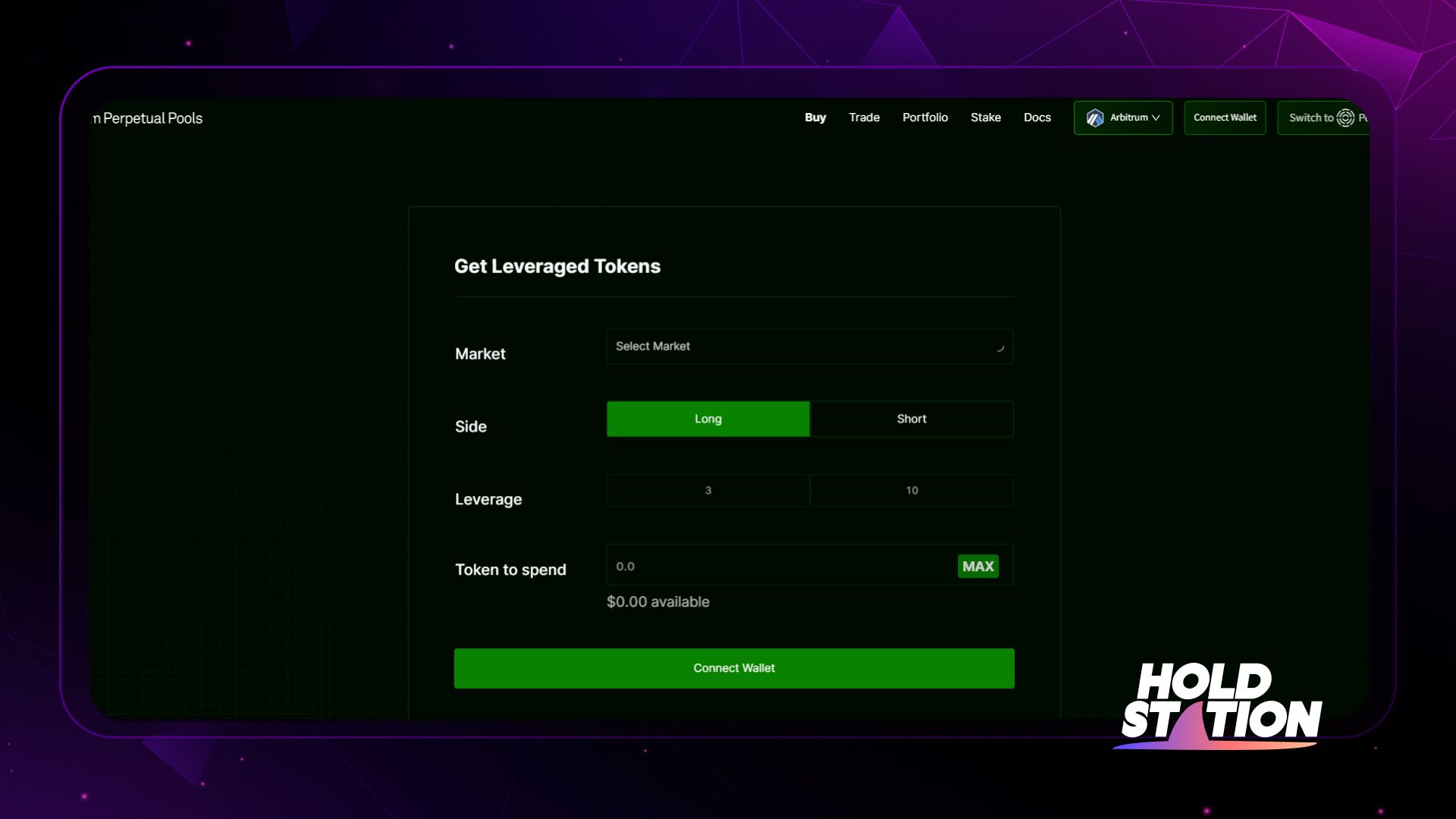
Perpetual Pools are essentially liquidity pools that hold collateral with 2 sides - LONG or SHORT - and collateral ownership represented by L-token and S-token. Oracle will regularly check the underlying asset price and transfer funds from the losing side to the winning side. For example, there is a perpetual pool for ETH and the price of ETH increases, part of the money from the SHORT side goes to the LONG side and the L-Token becomes more valuable than the S-tokens.
So the risk of liquidation would be when the value of the collateral is zero - the price fluctuates wildly according to a one-party guide to fully dominate while the collateral has not yet filled - it means owning "shares". part" in the pool is also null.
- Delta Neutral $USDC Vault
Thus, after combining the two platforms above, the USDC Vault operation mechanism is as follows:
- User deposits $USDC into vault and receives $usdGLP
- Vault uses $USDC to mint $GLP and 3S-ETH/3S-BTC on Tracer to hedge tokens.
- $GLP distributes dividends to users in the form of $ETH and $esGMX from fees and PnL of traders on GMX.
- In the meantime, Tracer Pool tokens will be continuously balanced to ensure a Delta Neutral index.
- At the same time, Tracer Pool tokens are staked and rewarded with $TCR.
- After that, Vault converts $ETH and $TCR to $USDC and distributes to users, $esGMX takes away stakes to receive Multiplier Points that increase $GLP APR.
- When the unlock time is due, users can withdraw their stablecoins and profits or leave the vault at any time via swapping $usdGLP to stablecoins on Uniswap.
In a nutshell, the key here will be that users deposit into Delta Neutral $USDC Vault Vault performs staking to collect profits and apply a hedge strategy to ensure profits no matter which direction the market moves users get reward.
So what is the risk here?
- GMX performance - if GMX doesn't make a profit, the Vault will suffer. Besides, if Traders on GMX make too much profit, it will also affect $GLP Providers.
- Strong market volatility leads to liquidity withdrawal on Tracer Pool.
- Risks from Smartcontract. Although it has been audited by Zokyo, this is not 100% safe, so investors need to allocate capital appropriately.
Team

Roadmap
Q4/2022
Deploy USDC, ETH, BTC Vault
- Network: Arbitrum
- Capacity: 200M$
- Fees: 2% Governance Fee and 20% Execution Fee
H1/2023
ETH2 Product Deployment: USDC, ETH Vault.
- Network: Ethereum
- Capacity: 1B$
- Fees: 2% Governance Fee and 20% Execution Fee
Umami advisor
- An Investment Advisor (RIA) and money services business (MSB) license to provide clients with financial advice focused on digital assets.
- Fees: TBA, all revenue from this activity will be transferred directly to UmamiDAO.
Investors and partners
Umami owns a diversal partner ecosystem such as GMX, Circle, Socket and Banxa.

Tokenomics
Umami Finance aims at a sustainable economy that pays off from real revenue and doesn't have inflation, so the design of Umami's tokenomic is quite special.
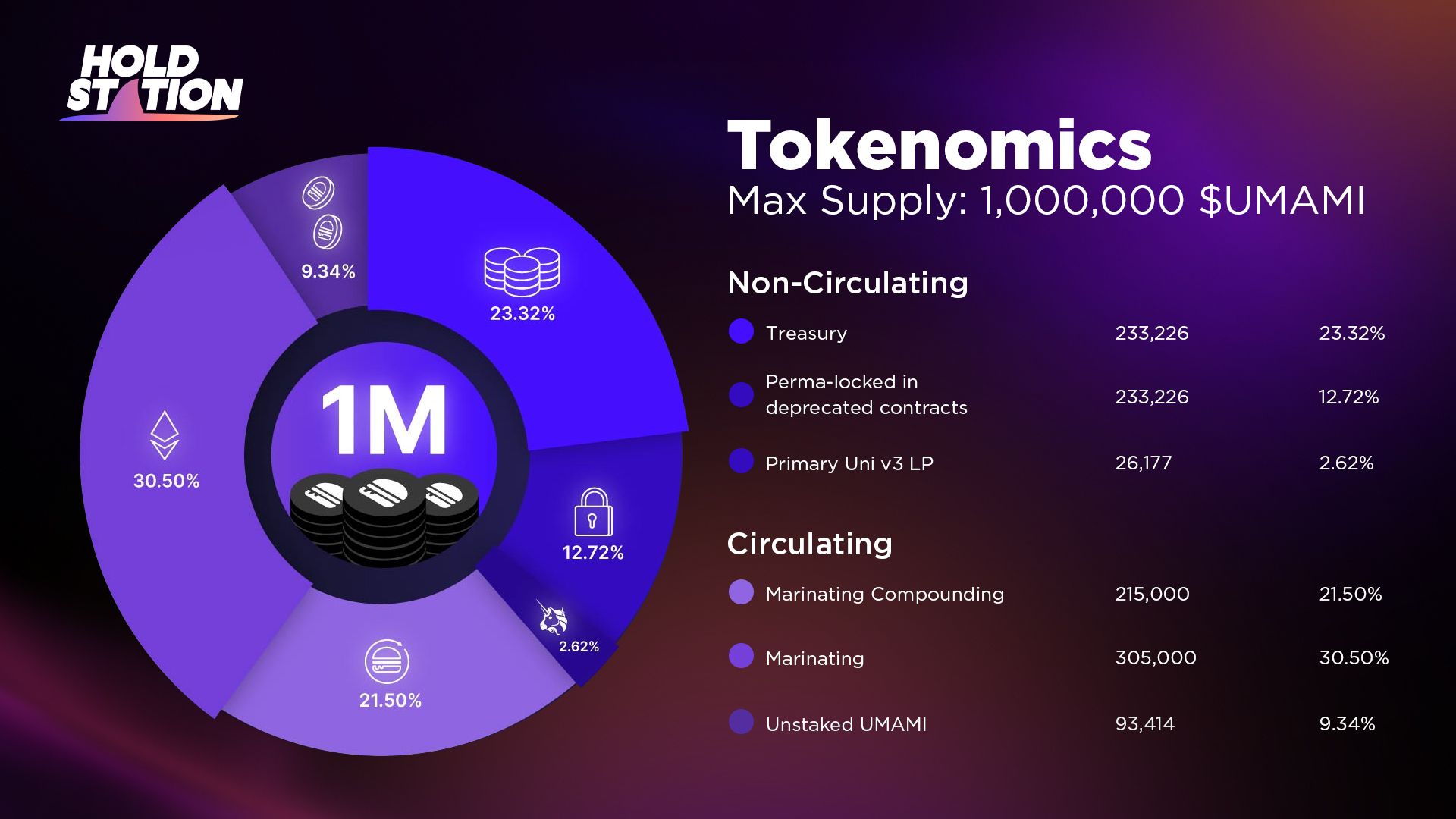
The maximum total supply of $UMAMI is 1,000,000 $UMAMI. This is the final result after the community vote was snapshotted on May 26, 2022. However, the total supply can still be minted in limited situations for platform development.
$UMAMI is divided into Non-Circulating and Circulating Supply, meaning:
- Non-Circulating: takes up 275,401 $UMAMI including 104,135 $UMAMI is permanently locked. The rest is in the treasury of the platform.
- Circulating: 724,599 $UMAMI included in Pool Marinate, Auto Compound and UniSwap V3
Note: These parameters were updated around October 2022 and will change continuously by market demand, buy back from the platform to develop the treasury. Readers need to check before deciding to invest.
Check the Umami Finance's Treasury Here
Conclusion
Looking at Umami Finance's operating mechanism and Tokenomics, we can see that the foundation is really towards sustainable development, completely eliminating inflation through revenue from the treasury. In the long run, if Umami, GMX and Mycelium all perform well with stable revenue, the Treasury will grow leading to more rewards for users. Besides GMX, Mycelium will also have deeper liquidity from Umami's users.
However, the biggest drawback of Umami is still the complete dependence on GMX and Mycelium. It is imperative that these two platforms work well to generate regular revenue for users as well as Umami Finance.
